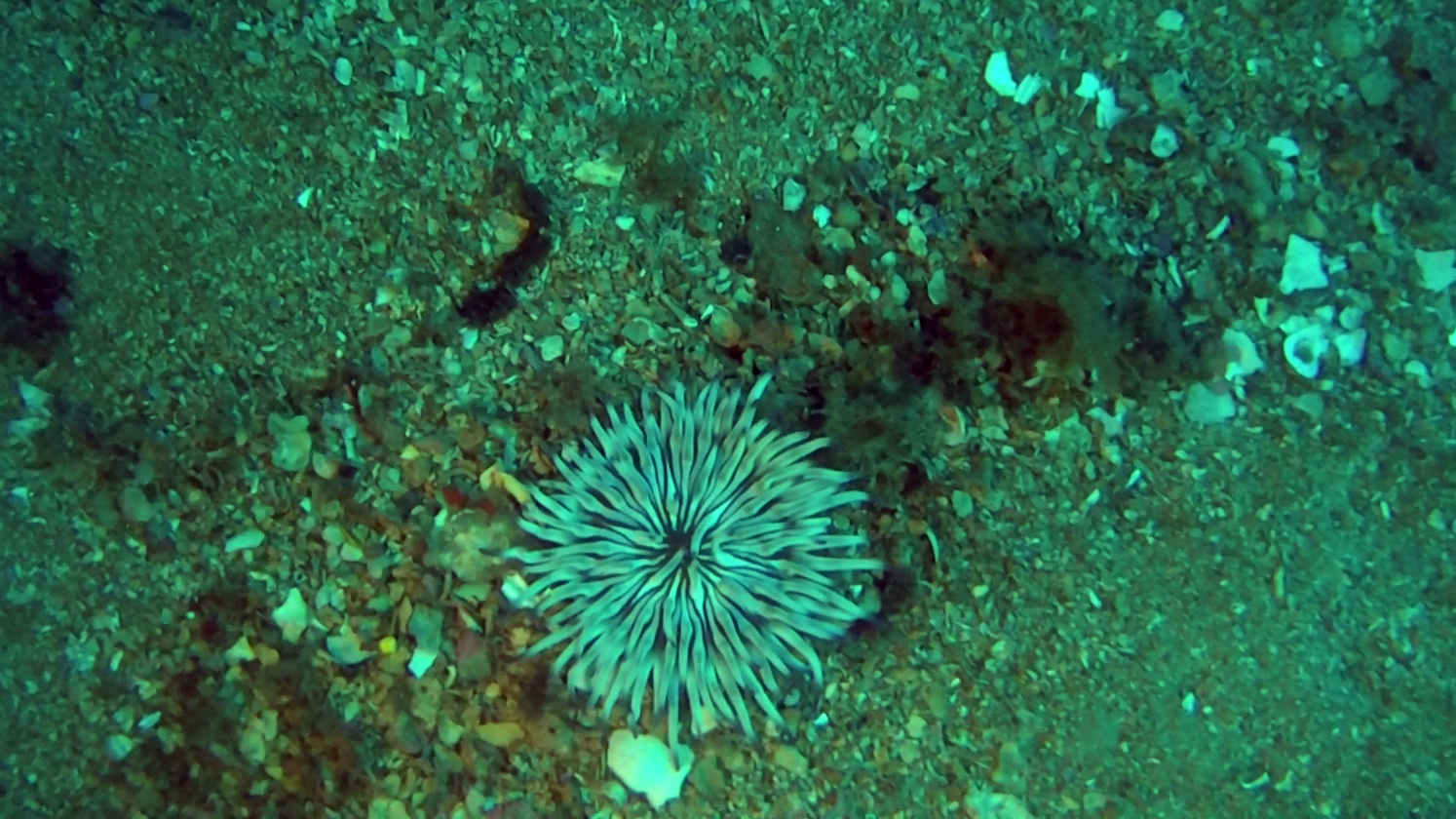Golden anemone - Condylactis aurantiaca
This anemone, Golden anemone or in a bad translation the sand actinia or sand anemone, is a species of anemone rather widespread in the Mediterranean Sea but difficult to meet since it populates almost exclusively sandy and gnarly or muddy bottoms.

Golden anemone (Condylactis aurantiaca Delle Chiaje, 1825) is a sea anemone of the Actiniidae family, in Cnidarians Phylum.
Distribution and habitat
It is a benthic species, endemic to the Mediterranean Sea. It lives on sandy or detrital seabed, from a few meters to a depth of 80 meters.
Description
The coloring is variable according to the depth and depends on the presence of symbiotic zooxanthellae: darker on the surface and lighter in depth.
Biology Supply
It feeds on both small live organisms and dead animals. The symbiosis with shrimps of the Periclimenes genus (Periclimenes sagittifer) that live among its tentacles feeding on its leftovers is characteristic.
Reproduction
The species is both oviparous and ovoviviparous.

Ecology
Like other sea anemones, this species catches prey with its tentacles which are armed with many cnidocytes, stinging cells which kill the prey. The prey is then transferred by the tentacles to the mouth. This sea anemone reproduces in spring and summer by releasing gametes into the water column where they are fertilised and develop into planula larvae. Alternatively, the gametes can be retained in the body cavity, the larvae being brooded there till the spring.
The shrimp species Periclimenes aegylios may be found living symbiotically with this sea anemone.
https://it.wikipedia.org/wiki/Condylactis_aurantiaca
https://en.wikipedia.org/wiki/Condylactis_aurantiaca
https://www.intotheblue.it/2021/09/01/golden-anemone-condylactis-aurantiaca/
https://www.intotheblue.it/2018/08/20/relitto-genepesca-wreck-intotheblue-it/
